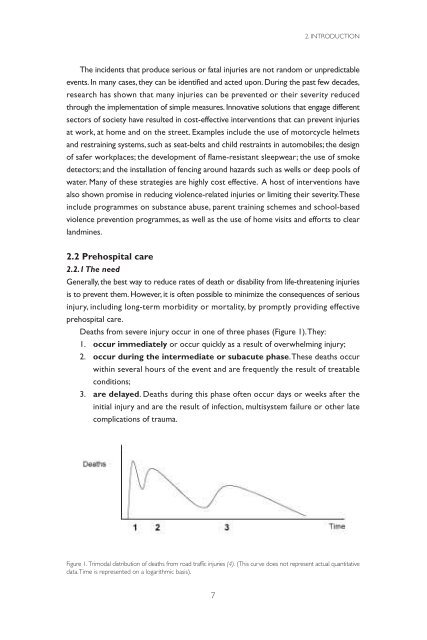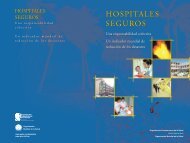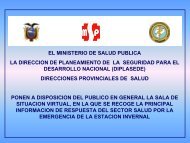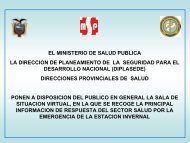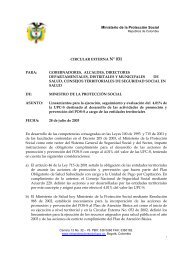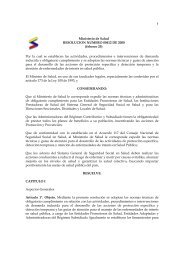Prehospital trauma care systems - World Health Organization
Prehospital trauma care systems - World Health Organization
Prehospital trauma care systems - World Health Organization
Create successful ePaper yourself
Turn your PDF publications into a flip-book with our unique Google optimized e-Paper software.
2. INTRODUCTION<br />
The incidents that produce serious or fatal injuries are not random or unpredictable<br />
events. In many cases, they can be identified and acted upon. During the past few decades,<br />
research has shown that many injuries can be prevented or their severity reduced<br />
through the implementation of simple measures. Innovative solutions that engage different<br />
sectors of society have resulted in cost-effective interventions that can prevent injuries<br />
at work, at home and on the street. Examples include the use of motorcycle helmets<br />
and restraining <strong>systems</strong>, such as seat-belts and child restraints in automobiles; the design<br />
of safer workplaces; the development of flame-resistant sleepwear; the use of smoke<br />
detectors; and the installation of fencing around hazards such as wells or deep pools of<br />
water. Many of these strategies are highly cost effective. A host of interventions have<br />
also shown promise in reducing violence-related injuries or limiting their severity.These<br />
include programmes on substance abuse, parent training schemes and school-based<br />
violence prevention programmes, as well as the use of home visits and efforts to clear<br />
landmines.<br />
2.2 <strong>Prehospital</strong> <strong>care</strong><br />
2.2.1 The need<br />
Generally, the best way to reduce rates of death or disability from life-threatening injuries<br />
is to prevent them. However, it is often possible to minimize the consequences of serious<br />
injury, including long-term morbidity or mortality, by promptly providing effective<br />
prehospital <strong>care</strong>.<br />
Deaths from severe injury occur in one of three phases (Figure 1).They:<br />
1. occur immediately or occur quickly as a result of overwhelming injury;<br />
2. occur during the intermediate or subacute phase.These deaths occur<br />
within several hours of the event and are frequently the result of treatable<br />
conditions;<br />
3. are delayed. Deaths during this phase often occur days or weeks after the<br />
initial injury and are the result of infection, multisystem failure or other late<br />
complications of <strong>trauma</strong>.<br />
Figure 1. Trimodal distribution of deaths from road traffic injuries (4). (This curve does not represent actual quantitative<br />
data.Time is represented on a logarithmic basis).<br />
7


